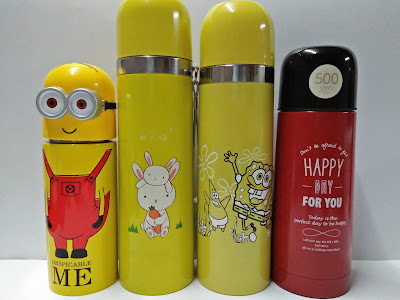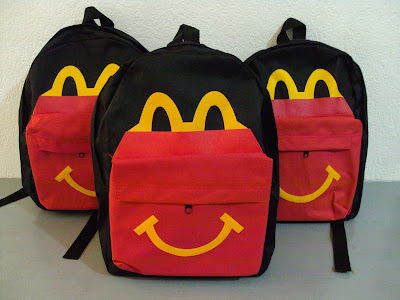EcoWaste Coalition Finds Vacuum Flasks Coated with Lead Paint
While cute and reusable, some yellow and red coated vacuum flasks may present a lead exposure risk, especially to children.
The EcoWaste Coalition, a waste and pollution watchdog group, made this revelation after screening for lead content six vacuum flasks that it recently bought from retailers in Manila and Quezon Cities for P100 to P388 each.
“Out of six samples, we found four to be decorated with yellow and red paint containing high levels of lead way beyond the 90 parts per million (ppm) regulatory limit,” said Thony Dizon, Chemical Safety Campaigner, EcoWaste Coalition.
“Lead is toxic if ingested and can cause adverse health problems, especially for vulnerable populations like children and pregnant women,” he said.
“Children could touch and ingest the lead in paint on the exterior surface of the flask when they drink from it, especially if the paint has started to chip due to scratching and frequent use,” he explained.
Using a portable X-Ray Fluorescence (XRF) device, the group found a “Minions” flask coated with lead paint at 84,100 ppm, a “Living Quality” flask with bunnies and carrot design at 38,600 ppm, a “Stainless Steel Vacuum Cup” with SpongeBob SquarePants and Patrick Star characters at 33,800 ppm, and a "Happy Day for You" flask at 6,108 ppm
None of the samples carry any information about their manufacturers or distributors.
The EcoWaste Coalition pointed out that lead is banned in the manufacture of, among other things, toys, school supplies and packaging that comes in contact with beverage or food as per the "Chemical Control Order (CCO) for Lead and Lead Compounds" issued by the Department of Environment and Natural Resources. The CCO also sets a maximum limit of 90 ppm for lead in paint.
To protect consumers, especially children, from potential lead exposure, the group urged health and trade authorities to act on the issue and stop the sale of lead painted vacuum flasks and other similar water containers.
The group noted that, outside the country, regulatory agencies have been taking action on vacuum flasks, insulated water bottles and tumblers that were found to contain high concentrations of lead on their surface coatings.
For example, the Korea Consumer Agency on August 29, 2019 announced that four metallic paint-coated tumblers were found to be covered with lead paint ranging from 4,078 to 79,606 ppm, prompting concerned companies to recall the products in question.
On April 19, 2018, the US Consumer Product Safety Commission (CPSC) issued a recall order for “Reduce Hydro Pro Furry Friends” water bottles because the pink paint on the outside of the bottle contains levels of lead exceeding the federal lead paint standard of 90 ppm.
According to a fact sheet published by the World Health Organization (WHO), “lead is a cumulative toxicant that affects multiple body systems and is particularly harmful to young children.”
“Young children are particularly vulnerable to the toxic effects of lead and can suffer profound and permanent adverse health effects, particularly affecting the development of the brain and nervous system,” the WHO said.
“Lead also causes long-term harm in adults, including increased risk of high blood pressure and kidney damage. Exposure of pregnant women to high levels of lead can cause miscarriage, stillbirth, premature birth and low birth weight,” the WHO further warned.
-end-
Reference:
http://english.kca.go.kr/brd/m_11/view.do?seq=458
https://www.cpsc.gov/Recalls/2018/base-brands-recalls-water-bottles-due-to-violation-of-lead-paint-standard-recall-alert
https://chemical.emb.gov.ph/wp-content/uploads/2017/03/DAO-2013-24-CCO-Lead.pdf
https://www.who.int/news-room/fact-sheets/detail/lead-poisoning-and-health






Comments
DalagangFilipina.info